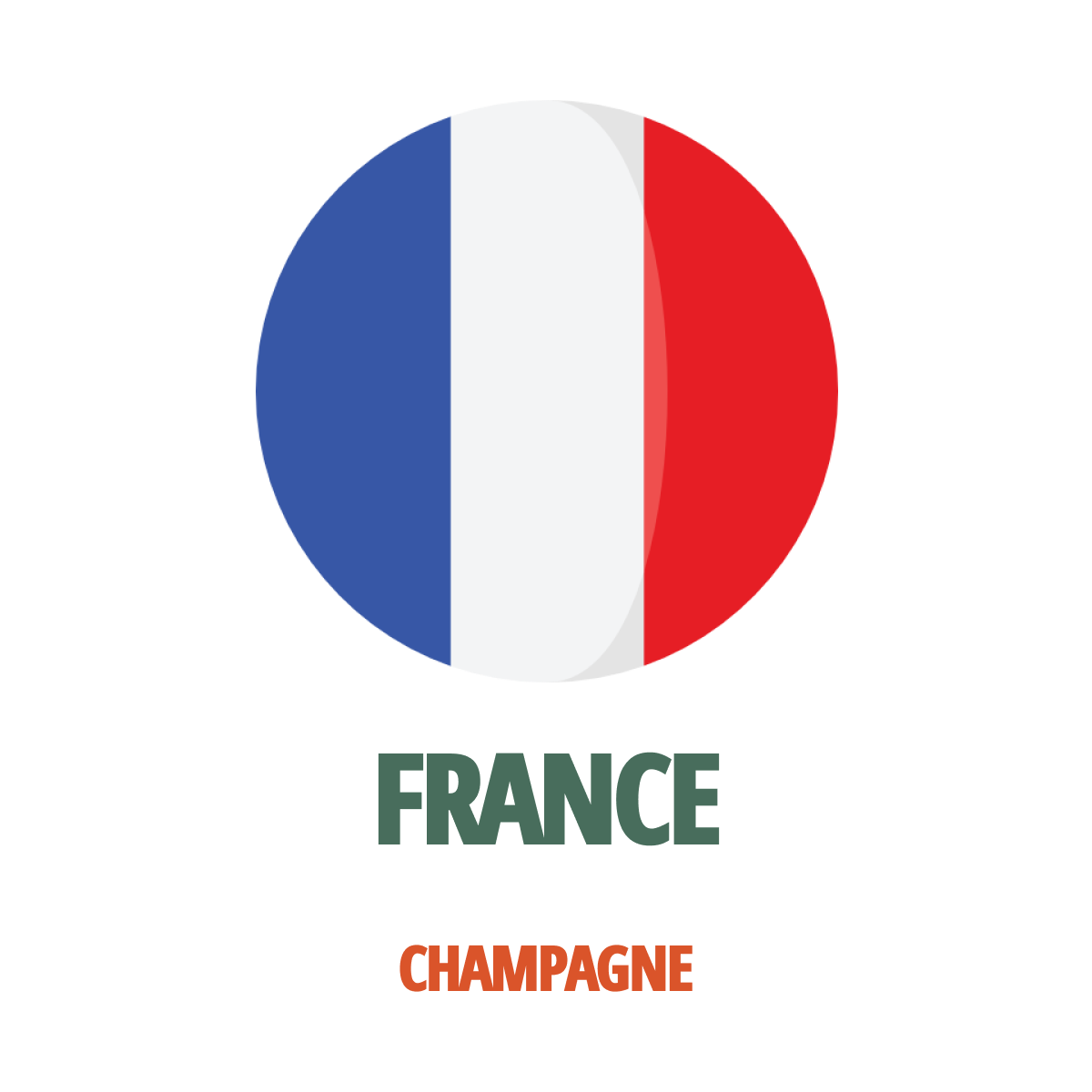
Champagne, the iconic sparkling wine region of France, is synonymous with celebration and luxury. Located in the northeast part of the country, Champagne has a long and storied history of winemaking, and its wines are renowned worldwide for their effervescence, elegance, and complexity.
Champagne is not just a sparkling wine; it is a protected designation of origin (AOC) that dictates the specific methods and grape varieties used in its production. The region's cool climate and chalky soils contribute to the unique characteristics of Champagne wines.
Winemaking History & Terroir
The history of winemaking in Champagne dates back centuries, but it was in the 17th century that the method for producing sparkling wine was developed. The cool climate and chalky soils of the region provide ideal conditions for growing the three main grape varieties used in Champagne production: Chardonnay, Pinot Noir, and Pinot Meunier.
Common Grape Varietals & Wine Styles
Champagne wines are typically blends of these three grape varieties, each contributing distinct qualities to the final product
Chardonnay
Known for its elegance and acidity, Chardonnay brings freshness, citrus notes, and minerality to Champagne
Pinot Noir
Adds body, structure, and red fruit flavors to the blend. Pinot Noir is the dominant grape in many rosé Champagnes
Pinot Meunier
Contributes fruitiness, floral aromas, and approachability. Often used to make more approachable and fruit-forward styles of Champagne.
Champagne comes in various styles, ranging from non-vintage (blended from multiple years) to vintage (made from grapes of a single year) and includes various sweetness levels from brut nature (bone-dry) to doux (sweet).
Major Winemaking Regions
Champagne is divided into several sub-regions, each contributing to the diversity of styles
Montagne de Reims
Known for its Pinot Noir-dominant wines, often powerful and structured. The Montagne boasts more grand cru villages than the other four districts.
Nine of the seventeen grand cru level villages of the Echelle des Crus can be found within its borders. This district is primarily known for black grapes, with Pinot Noir accounting for forty percent (40%) of its plantings and Pinot Meunier for thirty-six percent (36%). The best-known grand cru villages are Ambonnay, Bouzy, Mailly, Verzenay, and Verzy.
Côte des Blancs
Famous for its Chardonnay-dominant wines, prized for their elegance and finesse. Eighty-two percent (82%) is planted to Chardonnay and its four grand crus villages (Avize, Cramant, Le Mesnil-sur-Oger & Oger) produce some of the most sought after fruit in the entire Champagne AOC.
The wines of the Cote des Blancs express the shallow Belimnite chalk in which they root with the most minerality found in any of the five production districts. Most of the vineyards face east, soaking up the morning sun while dispelling humidity, which reduces the risk of powdery mildew.
Blanc de blancs wines from Le Mesnil-sur-Oger are among the most expensive champagnes on the market
Cote de Sezzane
This district is essentially a continuation of the Cote des Blancs and is still largely dominated by Chardonnay, which accounts for sixty-four percent (64%) of its plantings. The vineyards benefit from a mainly southeasterly exposure and the soils are mostly cooler soils of clay and silt with some pockets of chalk.
Vallée de la Marne
Notable for Pinot Meunier, producing wines with fruity and approachable characteristics.
Côte des Bar
The Aube district located in the Aube department is closer to Chablis then to Reims. Pinot Noir is king here, accounting for eighty-seven percent (87%) of the plantings and almost half of the Pinot Noir plantings in all of Champagne appellation.
Unique Winemaking Techniques
Champagne's production involves a unique method called the Traditional Method or Méthode Champenoise. This involves a secondary fermentation that occurs in the bottle, creating the characteristic bubbles. After aging on the lees (dead yeast cells), the bottles undergo a process called riddling and disgorgement to remove the sediment, followed by the addition of a dosage, a mixture of sugar and wine, which determines the final sweetness level.
In Conclusion
In conclusion, Champagne stands as the pinnacle of sparkling wine, representing a perfect marriage of tradition, craftsmanship, and terroir. Whether enjoying a crisp Blanc de Blancs from the Côte des Blancs or a robust Blanc de Noirs from Montagne de Reims, Champagne offers a diverse and sophisticated array of wines. The region's dedication to quality, innovation, and the pursuit of perfection has solidified its place as a symbol of celebration and refinement in the world of wine




















































